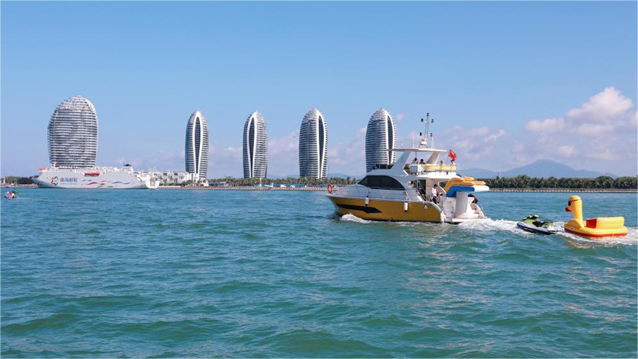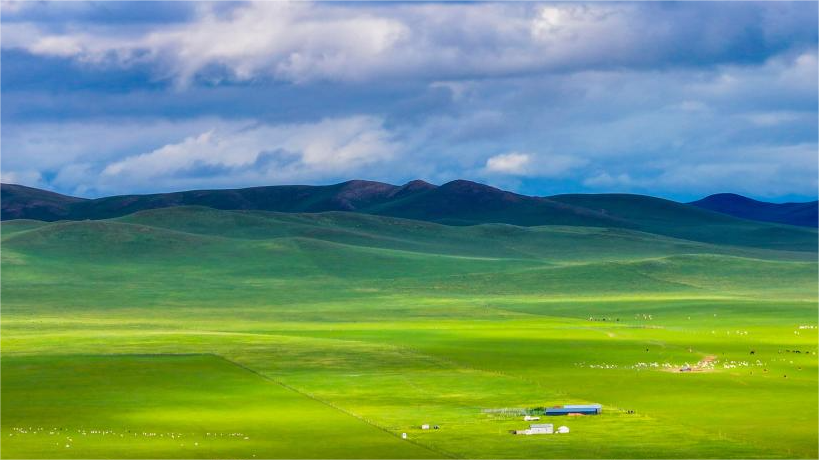Espying millennium-old relics in China's underwater museum
CHONGQING, July 18 (Xinhua) -- Visitors to southwest China's Chongqing Municipality are lucky to have a close view of the ancient Baiheliang hydrological inscriptions from the submerged site, thanks to the innovative conservation efforts of researchers.
Baiheliang, literally meaning the "white crane ridge," is located in the middle of the Yangtze River in the north of Chongqing's Fuling District. The stone ridge, measuring 1,600 meters in length and about 25 meters in width, is engraved with inscriptions dating back to the Tang Dynasty (618-907).
It recorded the 72 low-flow years of the longest river in China from 764 to 1963 and is claimed to be the world's oldest hydrographic survey device.
However, the Three Gorges Project has caused the stone ridge to be submerged under the reservoir's water surface, leading to the urgency of finding appropriate methods or technologies to protect the relics, said Yang Bangde, vice chairman of the Chinese Network of Water Museums.
Ge Xiurun, then an academician at the Chinese Academy of Engineering, reviewed materials about Baiheliang and came up with a new idea of using a non-pressure container to cover the stone ridge, thus enclosing Baiheliang underwater.
Before Ge's proposal, the only feasible solution was to reinforce the original site of Baiheliang and create a duplicate on the shore. Consequently, the stone ridge would have been buried by silt.
"The fundamental principle, according to global consensus, is not to separate the stone ridge from its natural environment. Fulfilling this proved challenging, thus requiring experts over a decade to devise solutions to the problem," Yang said.
After months of feasibility research, Ge's plan was adopted, leading to the creation of the Baiheliang Underwater Museum.
Visitors can ride a 91-meter-long escalator to see the container covering the stone ridge, situated 40 meters beneath the surface of the Yangtze River. UNESCO has recognized the museum as the world's first underwater museum accessible without diving.
"Visiting the museum feels akin to entering a submarine, adding a touch of sci-fi. Also, it's quite meaningful to learn about the wisdom and customs of ancient Chinese," said Wu Jing, a visitor from Chongqing's Yubei District.
"The conservation of Baiheliang will never come to an end," said Yang, who also serves as curator of the Baiheliang Underwater Museum.
As occasional damage on the stone ridge may occur, the museum frequently invites researchers from across the country to deal with the problems comprehensively while professional divers conduct regular inspections and cleanings of the stone ridge, Yang added.
"As I looked down and saw the sign on the floor reading 'You are at the heart of the Yangtze River,' I felt transported to another world. It's so impressive to see these underwater millennium-old relics," said Zhou Yutao, a visitor from northwest China's Gansu Province.
"The Baiheliang conservation project has also disseminated Chinese wisdom on a global scale. In Pakistan, a larger water conservancy project is underway, which may lead to the submergence of relics. As a result, international experts often reach out to the Baiheliang Underwater Museum, seeking to learn from its experience, according to Yang.
Photos
Related Stories
- Ancient coins witness Chinese ethnic integration
- Jingmen Museum combines science, tradition in restoring ancient relics
- Ancient Silk Road underground tombs museum opens in Xinjiang
- Series of exhibitions held at Shenyang Palace Museum
- Shanghai Museum invites pet cats to Egyptian antiquities exhibition
- Chinese museums to offer more convenient access for summer visitors
Copyright © 2024 People's Daily Online. All Rights Reserved.









